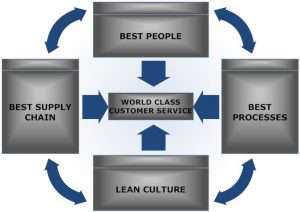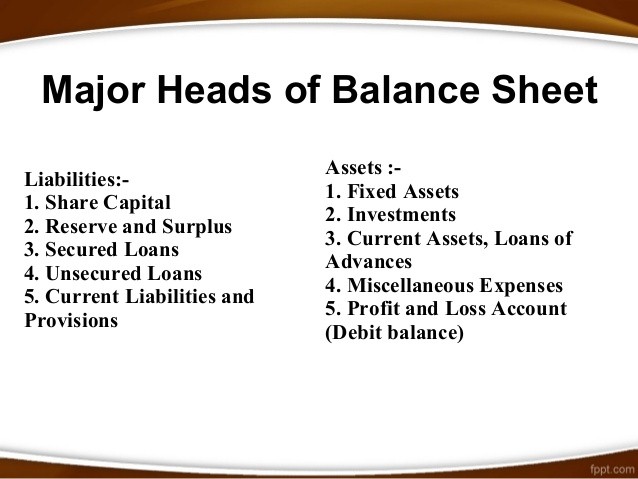Intent means intention, aim purpose, objectives, target, goal etc. Strategic intent is a statement of the course that the management of an organization plans to take the enterprise in the future. The strategic intent must be clear and crisp which should be grasped by everybody in the organization and by its all stakeholders. When maximum people understand the intention, all of them can work consistently to achieve the corporate purpose.
The strategic management process begins with a challenging vision that stretches the organization further than and beyond its capabilities. Creating and implementing the strategic intent sequence is: defining a pragmatic vision, interpret it into a meaningful mission, specifying goals and objectives in achieving it. The next step is to  then create and communicate the intent all levels of the organization, making strategic plans and actions for achieving the intent. The strategic intent of an organization describes how the firm’s energy and resources will be channeled into a focused and unified overall goal (Hamel & Prahalad, 1989). The intent directs overall strategic direction and destiny to be pursued by the company.
then create and communicate the intent all levels of the organization, making strategic plans and actions for achieving the intent. The strategic intent of an organization describes how the firm’s energy and resources will be channeled into a focused and unified overall goal (Hamel & Prahalad, 1989). The intent directs overall strategic direction and destiny to be pursued by the company.
The success stories of companies such as Toyota, Canon, Apple, GE, Tata Motors, Mahindra & Mahindra, ITC and Komatsu share an underlying theme: all have embraced bold ambitions beyond the limits of existing capabilities and resources. They have aimed for global leadership and created systems, processes and values for their products. Komatsu wanted to outperform Caterpillar, Canon sought to beat Xerox and Honda wanted to become an automotive pioneer like Ford. The concept of strategic intent holds important lessons for small businesses aiming to grow and succeed. Strategic intent should be clearer through the organization’s vision and missions statements; statements of intent need to be unambiguous than the usual directional statements. Most mission and vision statements point the way forward only in general terms. Sharp statements of intent can provide more clarity about what to do in the near future to achieve the vision and mission. These statements convey the flavor of the strategic decisions taken through the planning process.
The vision statement of Facebook is “To give people the power to share and make the world more open and connected.” Their mission to give people the power to share and to make the world more open and connected is so apt. Facebook has given people a voice to share what matters to them; people share their views, their ideas, their personal life stories, photos, opinions on various topics. Because of facebook people can share and connect, thus the society has made progress; people have been able to connect with their childhood friends, school friends because of which relationships grew stronger, more jobs and businesses are created and governments can reflect on people’s problems and people’s values. When we have better tools for sharing, we have more voice. There is strength in unity, and that’s what facebook has done. It lives its strategic intent aptly.
Vision is a declaration of an organization’s general direction of journey; strategies let you know that you need to take specific things with you to complete the journey, and indicates key points along the way. Gary Hamel and C.K. Prahalad in their book ‘Competing for the Future’ highlight importance of intent statement because intent enables a strong sense of direction. It provides a clearer focus for finding opportunities in and around the organization and it improves commitment to achieve the implied fortune.
Using the term World-class in an intent statement: Consider the classic vision of becoming ‘world-class’. What does could ‘world-class’ possibly mean in any specific enterprise? How can this be interpreted into terms that help those carrying out the actual day-to-day work of the organization?
An organization which uses ‘world-class’ notion in its intent statement (vision or mission) it needs to compare itself with in its performance with peers on the world stage. For a business, achieving ‘world-class’ might mean being in the top 10% on competitive metrics. Initially the corporate intent may mean lifting the firm from its present position as a middle ranking outfit into the top 20%. If this is not achieved, the term ‘world-class’ makes it a vague aspiration of the organization. To be ‘world-class’ an organization must be energetic in terms of competition, product quality, pricing strategies, supply chain, processes, culture and of course best people in team.
Companies that have climbed in global competition, and are counted among the global leadership over the past 20 years habitually began with ambitions that were out of all proportion to their resources and capabilities. But they created an obsession with winning at all levels of the organization and then sustained that obsession over the 10- to 20-year quest for global leadership. This passion is called “strategic intent.” The concept encompasses an active management process that includes focusing the organization’s attention on the essence of winning, motivating people by communicating the value of the target, leaving room for individual and team contributions, sustaining enthusiasm by providing new operational definitions as circumstances change, and using intent consistently to guide resource allocations.
Strategic intent needs to be stable in terms of time: In battles for global leadership price wars, market wars are one of the most critical tasks. But, this is to lengthen the organization’s attention span. Strategic intent provides consistency to short-term action, while leaving room for reinterpretation as new opportunities emerge. Strategic intent sets a target that deserves personal effort and commitment.
Pfizer’s vision statement is “To become the world’s most valued company to patients, customers, colleagues, investors, business partners and the communities where we work and live.” The company believes that every patient has a story and they should work hard to change it on a positive note, this philosophy is at the core of the company and each employee works hard to try and change the ending, they put the philosophy at the heart of everything they do. The company believes that patients deserve the best medicines and should have a right to choose how they are treated, in partnership with their doctor or healthcare specialist. That is why Pfizer invests a lot of time in talking with patient groups, governments and healthcare providers to ensure patients have access to the medicines which they need the most. Pfizer invests a lot in R&D, because they have revolutionized the way diseases are managed, saving money and improving quality of life.
So friends, strategic intent provides a sense of direction, it provides a bird’s eye view of the future about the long-term market or competitive position the organization hopes to develop and occupy. It can provide a sense of discovery to the workers, in adopting their best practices and avoiding snags or dangers as far as possible. Strategic intent provides a sense of destiny, valuable goals around which people, resources, and budgets can be focused across the organization.















































